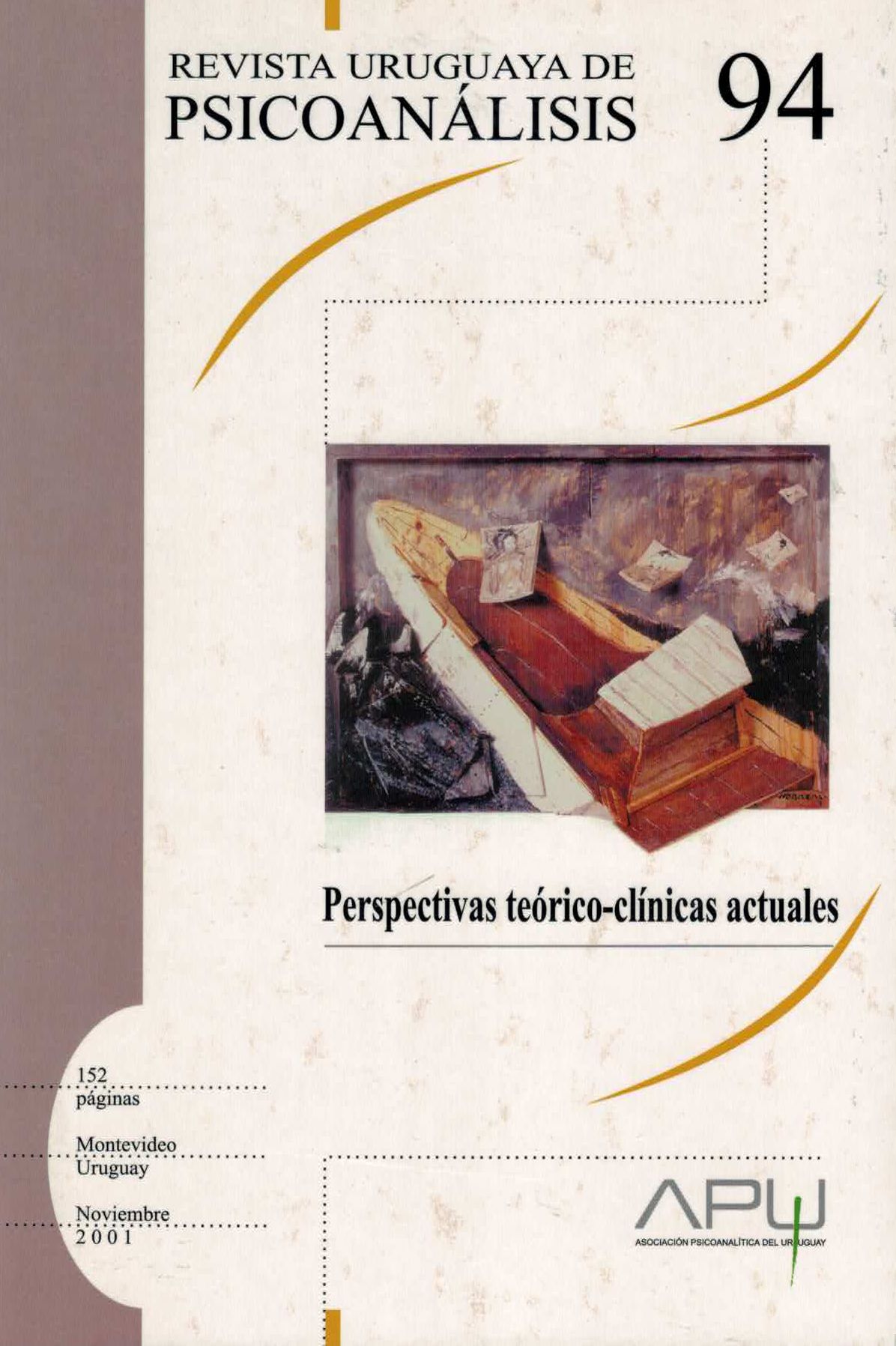The Discourse and the Psychoanalytic Method
Keywords:
discurso, simbolización, significante, material clínicoAbstract
The paper involves a short development on the performing aspect of discourse in the analytical transference. It is through the transference that the object is actualized (made present) both in its structuring aspect and as a symptomatic aspect of the subjective organization, and it is also from the analyst’s words, with all the discourse’s prerogatives (words, gestures, tone, syntax, and silence) that the dimension of the object is inferred, brought nearer, in a unique manner, by the mere act of saying. The analyst makes the object present, thus allowing a new drive turn which allows the loss that is necessary for the occurrence of a psychoanalytic symbolization instance; and thus, an opportunity for a new, different re-writing is available. The perlocutionary strength of the performative (John Austin), allowing a reinforcement of the referent in performative expressions, is thus linked to the three components of Peirce’s Semiotics, i.e. perceptive elements (including all sensorial aspects), an experience with the object, and the symbol as an interpretant. In Psychoanalysis, conversely to Linguistics or Semiotics (Charles S. Peirce), the discourse is inhabited by the subject. In the discourse, an experiencing experience, in the gerund, is mise en acte, where symbolization, always indicating a loss, leads to a meaningful articulation. The paper suggests considering the signifying nature of a gesture, an action that, while in the gerund, imposes a grammatical profile on perceptive experiences, and thus the possibility for signification. The icon, the index, and the symbol (Peirce) are the constitutive elements of a triad which occurs in a spiraled and simultaneous manner in psychoanalytic symbolization, all indicating a subjective production. The discourse implies affection for and effects on the Other, knotting together the subject’s and the Other’s unconscious wish.
Downloads
References
AUSTIN, JOHN L. (1962). “How to Do Things with Words”. Compilado por J. O. Urmson. Oxford. Clarendon Press. Oxford University Press.
_______. (1982). “Cómo hacer Cosas con Palabras”. Buenos Aires. Ed. Paidós.
BAJTIN, MIJAIL M. (1982). “Estética de la Creación Verbal”. México. Ed. Siglo XXI.
BENVENISTE, E. (1988). “Problemas de Lingüística General”. México, Siglo XXI, 14ª edición.
CANESTRI, JORGE (1998). “Notes on Lingüistic Activity and Psychoanalysis”. In: “Changing Ideas in a Changing World”, edited by J. Sandler, R. Michels y P. Fonagy. New York. Karnak Books, 2000.
CASAS de PEREDA, MYRTA (1999). “En el Camino de la Simbolización. Producción del sujeto psíquico”. Buenos Aires. Ed. Paidós, Psicología Profunda. Capítulo 1. Acerca del Discurso Infantil Capítulo 2. Gesto, Juego y Palabra. El discurso infantil. Capítulo 3. Sobre el juego y la Simbolización. Capítulo 21. Simbolización en Psicoanálisis. Nuevas aproximaciones metapsicológicas.
CASAS de PEREDA, MYRTA (2000). “De Finales y Principios. El duelo”. Publicado en Libro de las XI Jornadas Científicas y I Congreso Uruguayo de Psicoanálisis “Sobre los Duelos y sus Destinos”. Edición de la Comisión de Publicaciones de APU (Asociación Psicoanalítica del Uruguay).
FLO, JUAN (1989). “Imagen, Ícono e Ilusión”. Montevideo, Universidad de la República. Facultad de Humanidades y Ciencias.
FONAGY, IVAN (1970). “Les bases pulsionelles de la phonation”. Rêvue Française de Psychoanlyse, Janvier-Fevrier, Tomo XXXIV.
FREUD, SIGMUND (1900). “La Interpretación de los sueños”, en Obras Completas, Buenos Aires, Amorrortu, t. IV, 1976.
FREUD, SIGMUND (1926). “Inhibición, Síntoma y Angustia”, en Obras Completas, Buenos Aires, Amorrortu, T. XX, 1976.
HARARI, ROBERTO (1997). “Las disipaciones del inconsciente”. Amorrortu Editores, Buenos Aires.
LACAN, JACQUES (1964) “Seminario 11”, Editorial Seix Barral, Barcelona, 1977.
PÊCHEUX, MICHEL (1969). “Analyse automatique du discours”, en: “La inquiétude du discours”. Paris. Ed. Des Cendres, 1990.
PEIRCE, CHARLES SANDER (1974). “La ciencia de la semiótica”.Buenos Aires. Nueva Visión.
_______. (1991) “Peirce on Signs”. Chapel Hill, The University of North Caroline Press.
PIRANDELLO, LUIGI. “Novelas para un Año”.
WINNICOTT, DONALD (1953). “Transitional Objects and Transitional Phenomena”, in: Playing and Reality, Hardmondsworth Penguin Education.
_______. (1969) “The Use of an Object and Relating Through Identifications”, in: Playing and Reality, Hardmondsworth Penguin Education.



 This work is licensed under a
This work is licensed under a 